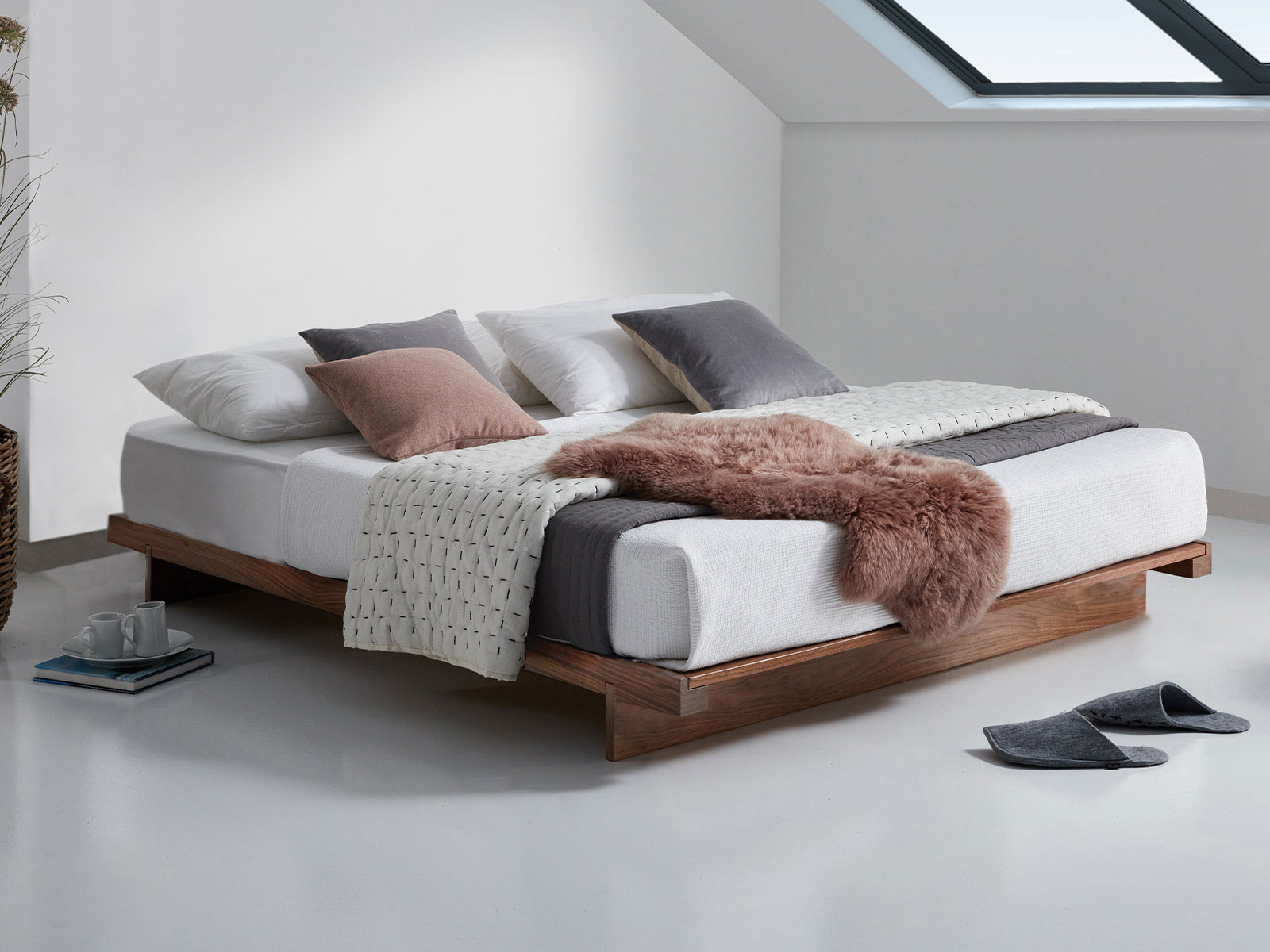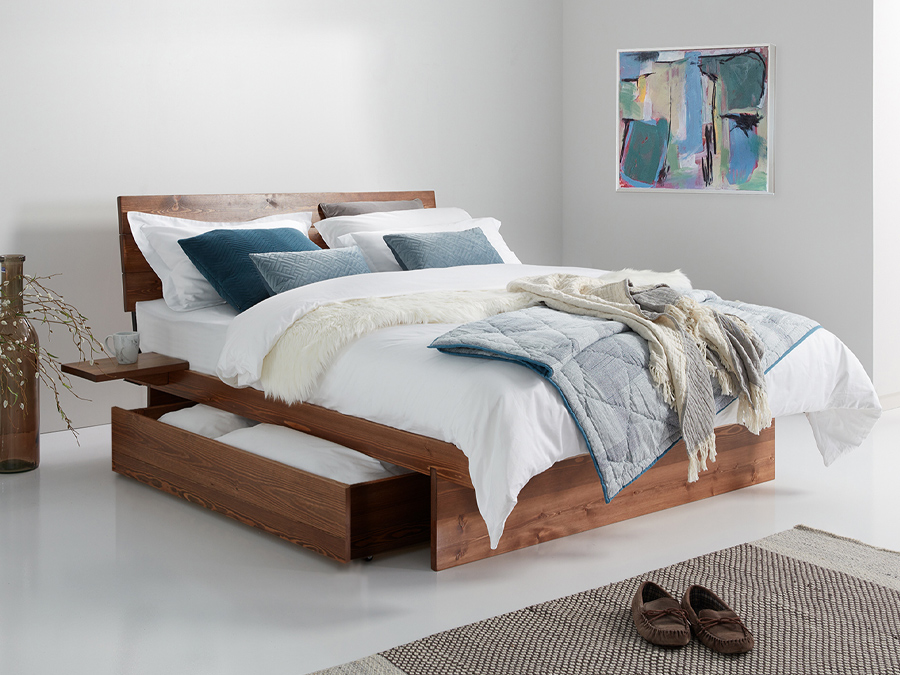
Offering an array of health and space-saving benefits, there’s good sense in the Japanese practice of sleeping on the floor. The concept of sleeping on the floor is quite alien to people living in the Western world. We typically prefer to sleep on raised mattresses, supported by sturdy frames. But it’s not the way when it comes to beds in Japan.
The Japanese have a long-standing tradition of sleeping on the floor. It’s traditionally been a matter of practicality, with Japanese homes of a limited size and rooms used for various purposes.
Space optimization can be seen as the number one answer to the question of why Japanese people sleep on the floor. However, the practice has continued to this day, with the Japanese people enjoying various health and space-saving benefits. Read on as we explore these benefits and highlight the range of Japanese beds in our collection.
The Japanese tradition of sleeping on the floor dates back well over a millennium, with the tatami mat being composed of a woven rush grass cover, filled with rice straw. A shikifuton mattress and kakebuton duvet would then be laid over the top, with the hard-working Japanese people laying their weary heads on pillows made from buckwheat hull.
Although the practice remained largely unchanged, the modern-style futon was first introduced in the 17th century. Also comprised of a mattress, pillow, and duvet, these Japanese beds could be put away during the day for alternative use of the space. The affordability of the futon also made it a popular choice for the Japanese people.
Tying in with the Japanese concept of minimalism, sleeping on the floor is also associated with a variety of health benefits. It might even be one of the reasons why Japan is one of the longest-lived countries. At the very least, it can help with the maintenance of good posture, with the spine being kept in a neutral position when sleeping on a solid surface.
Besides being linked with back pain, sleeping on a soft mattress can also result in the build-up of pressure points and restricted blood flow. However, improved circulation is another reason why Japanese people choose to sleep on the floor.
Ensuring the even distribution of weight, it can also make a difference in terms of sleep quality. There’s less likelihood of tossing and turning when reclining on a firm surface. The better regulation of body temperature can help you in getting the best night’s sleep too.
Anybody who’s spent time in Japan will tell you that there are huge seasonal variations, with extreme heat in the summer and cold in the winter. And while the use of summer toppers and winter mattresses is common in the West, the Japanese go one step further. A light and breathable futon is typically used in the summer to prevent overheating. This can be swapped with a thicker and better-insulating futon for warmth in the depths of winter.
Unfortunately, there are some downsides to having Japanese beds on the floor. Such as:
Difficulty in finding comfort when resting on a firm surface (particularly for taller and larger people)
Uncomfortable coldness, particularly in cold climates and homes with draughts
More risk of accumulating dust and dirt (with regular cleaning essential for the removal of allergens and bacteria)
Time that has to be spent rolling, arranging, and gathering futons each day.

Despite the downsides, the futon has become increasingly popular in the west. However, various futon adaptations have been made for added comfort and convenience when sleeping on the floor. As an example, more people have taken to fitting their homes out with futon frames, which raise the futon off the floor. Tatami mats can also be used for this purpose.
Get Laid Beds cater for those wanting to enjoy the various benefits of floor sleeping with classic Japanese beds in a wide selection of sizes and wooden finishes. Topped with thick mattresses, these Japanese-inspired beds offer the best of both worlds. You can enjoy the subtle minimalism, drifting away to oriental dreamscapes on the Low Fuji Attic Bed or Japanese Storage Bed (pictured). Made from 100% solid wood and with super-strong solid slats, these beds will stand the test of time.
Hopefully, you’ll now have a better idea of why some Japanese people choose to sleep on the floor. You might even be tempted to buy a Japanese bed frame for better health and optimal use of your interior space. With the assurance of an 11-year guarantee, there’s every reason to choose from the Japanese Get Laid Beds collection. Enjoy yoi yume mitene (sweet dreams) on an Oriental-inspired bed made just for you.

WE VALUE YOUR PRIVACY
We use cookies to enhance your browsing experience, serve personalised ads or content, and analyse the traffic with 3rd party services. By clicking ‘Accept’, you consent to our use of cookies, visit our Privacy Policy and our Cookie Policy for more info.
Note: International shipping prices are charged per bed rather than per order. This is due to the bulky nature and weight of these products.